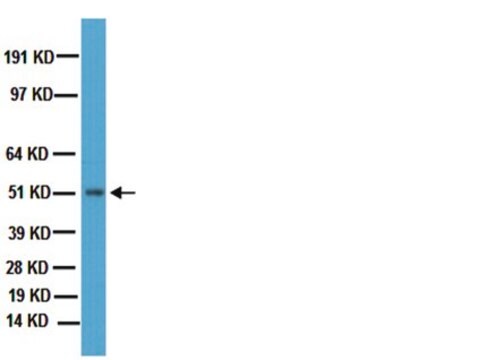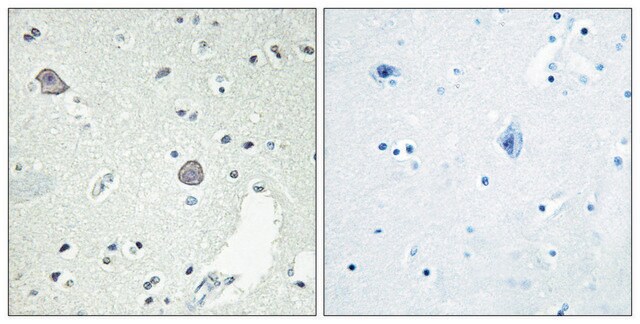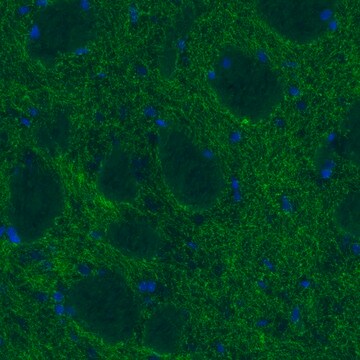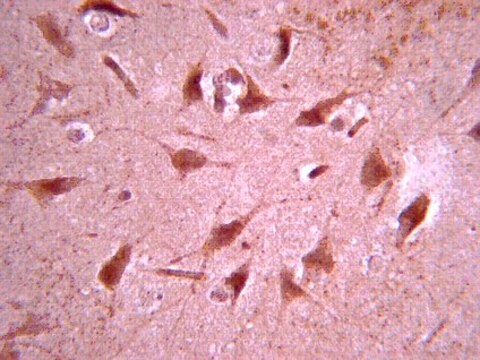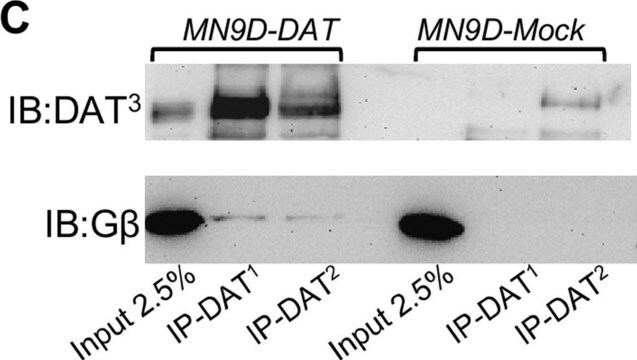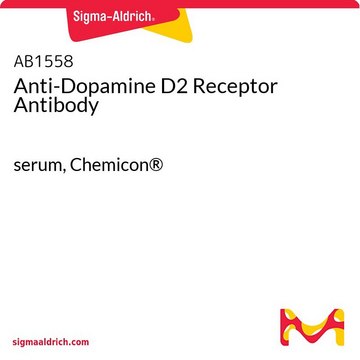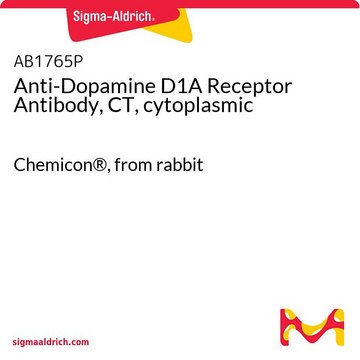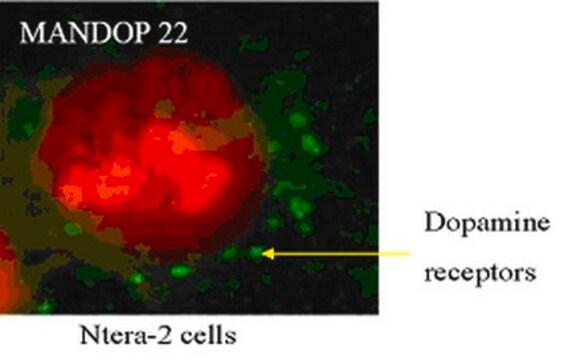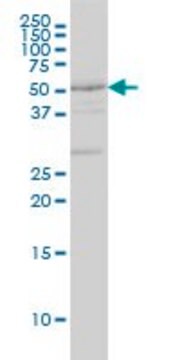D2944
Anti-D1 Dopamine Receptor antibody,Rat monoclonal
clone 1-1-F11 s.E6, purified from hybridoma cell culture
Sinonimo/i:
Anti-DRD1
About This Item
Prodotti consigliati
Origine biologica
rat
Livello qualitativo
Coniugato
unconjugated
Forma dell’anticorpo
purified immunoglobulin
Tipo di anticorpo
primary antibodies
Clone
1-1-F11 s.E6, monoclonal
Stato
buffered aqueous solution
PM
antigen ~50 kDa
Reattività contro le specie
rat, monkey, human
Concentrazione
~1 mg/mL
tecniche
immunocytochemistry: 5-10 μg/mL using D1 dopamine receptor transfected HEK-293T cells
immunohistochemistry: suitable
western blot: suitable
Isotipo
IgG2a
N° accesso UniProt
Condizioni di spedizione
dry ice
Temperatura di conservazione
−20°C
modifica post-traduzionali bersaglio
unmodified
Informazioni sul gene
human ... DRD1(1812)
rat ... Drd1a(24316)
Descrizione generale
Immunogeno
Applicazioni
Immunofluorescence (1 paper)
Immunohistochemistry (1 paper)
- immunohistochemistry
- immunoblotting
- immunocytochemistry
- proximity ligation assay
- co-immunoprecipitation
- western blotting
Azioni biochim/fisiol
Descrizione del bersaglio
Stato fisico
Note legali
Esclusione di responsabilità
Non trovi il prodotto giusto?
Prova il nostro Motore di ricerca dei prodotti.
Prodotti correlati
Codice della classe di stoccaggio
12 - Non Combustible Liquids
Classe di pericolosità dell'acqua (WGK)
WGK 1
Punto d’infiammabilità (°F)
Not applicable
Punto d’infiammabilità (°C)
Not applicable
Dispositivi di protezione individuale
Eyeshields, Gloves, multi-purpose combination respirator cartridge (US)
Scegli una delle versioni più recenti:
Possiedi già questo prodotto?
I documenti relativi ai prodotti acquistati recentemente sono disponibili nell’Archivio dei documenti.
I clienti hanno visto anche
Il team dei nostri ricercatori vanta grande esperienza in tutte le aree della ricerca quali Life Science, scienza dei materiali, sintesi chimica, cromatografia, discipline analitiche, ecc..
Contatta l'Assistenza Tecnica.